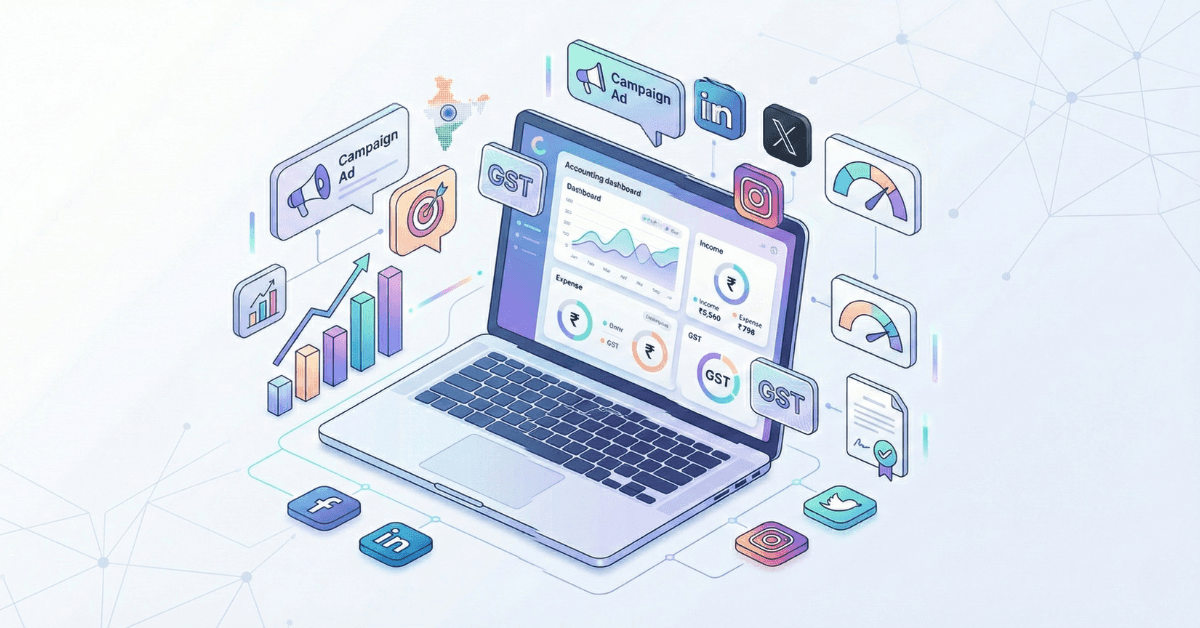
An e-Way Bill is a mandatory electronic document under GST for transporting goods worth over ₹50,000. Learn what it is, how to easily generate one , and the key documents required. Understand exemptions, validity, and expert tips for hassle-free compliance. Ensure smooth, penalty-free goods transportation with this comprehensive guide.
What is an E-Way Bill in GST?
An E-Way Bill, also known as an Electronic Way Bill, is an essential document under the Goods and Services Tax regime in India for transporting goods worth more than ₹50,000. It is an online generation meant for duty permits on the movement of goods and ensures compliance with GST by including important information such as the value of goods, recipient, and transporter information. It can track the commodities while in transit and also prevent tax evasion
What is The Format of an E-Way Bill?
An E-way bill, also known as GST EWB-01, is divided into 2 parts, part A and part B.
Part A – This section contains details about the goods and the parties involved in the transaction:
GSTIN of the supplier and recipient
Invoice or challan number and date
Value of goods
HSN (Harmonized System of Nomenclature) code of the goods
Place of dispatch and delivery
Description of the goods being transported
Part B – This part includes information about the transportation of the goods:
Vehicle number or Transporter ID
Mode of transportation (road, rail, air, or ship)
Distance to be covered
Who Fills Part A of an E-way Bill?
Supplier: Part A of the e-way bill must be filled by the supplier if the supplier is registered under GST.
Recipient: The recipient of the goods is responsible for filling out Part A of the e-way bill in case the supplier is unregistered.
E-commerce Operator: When goods are being transported through an e-commerce operator, it becomes his responsibility to fill out Part A.
Transporter: In case the e-way bill is not generated by either of supplier or the recipient, the transporter shall fill Part A of the e-way while generating it.
Who Fills Part B of E-way Bill?
Supplier's Own Transport: In case, the supplier has opted to transport the goods through their own vehicle or hired conveyance, it requires filling the Part B with Vehicle/Conveyance details.
Using Transporter Service: If the third-party transporter is utilized by the supplier, the supplier completes Part A and submits it to the transporter. The transporter will then complete Part B by including vehicle or conveyance details. A transporter can only prepare part B after being duly authorized by the supplier.
Documents Required for E-Way Bill Generation: Complete Checklist
In order to generate an E-Way Bill, you will require the following documents:
Bill of invoice or bill of supply or delivery challan that is attached with the consignment
Transporter ID or the vehicle number in case the products are being transported by road.
How To Generate an E-way Bill?
An E-Way Bill is made if the value of goods exceeds ₹50,000. Here's how one can create an e-way bill step-by-step:
A. Generation of E-way Bill at the E-Way Bill Portal
Step 1: Open the official E-Way Bill Portal and log in using your GST credentials. Step 2: From the dashboard, select the option to ‘Generate New E-Way Bill.’ Step 3: Fill in all the necessary details in Part A, including the goods description, GSTIN of the supplier/recipient, and invoice details. Step 4: Provide the transportation details in Part B, such as vehicle number or Transporter ID. Step 5: Click the ‘Submit’ button to generate your E-Way Bill.
B. Generation of E-Way bill Through SMS
E-Way Bill generation is available through SMS for registered persons. This can be done by sending a type of format from the registered mobile number.
SMS are to be sent on 7738299899.
How to Cancel Or Amend an E-Way Bill?
An E-Way Bill may be canceled due to some reason. Here's a step-by-step guide :
Cancel an E-Way Bill
Step 1: Log into the E-Way Bill Portal.
Step 2: Proceed to 'Cancel E-Way Bill.'
Step 3: Enter the E-Way Bill Number and for which you are canceling this along with your reason.
Step 4: Click 'Submit'.
An E-way bill cannot be amended, however
In case of change in the transportation mode, vehicle numbers or details of the transporter can be updated.
A facility for amendment is available through the portal 'Update Vehicle Number'.
Incase of | Format |
|---|---|
Generation of E-Way Bill by Supplier | EWBG TranType RecGSTIN DelPinCode InvNo InvDate TotalValue HSNCode ApprDist Vehicle |
Generation of E-Way Bill by Transporter | EWBT TranType SuppGSTIN RecGSTIN DelPinCode InvNo InvDate TotalValue HSNCode ApprDist Vehicle |
Updation of Vehicle Number Through SMS | EWBV EWB_NO Veh_Tran_No ReasCode Mode. |
Cancelling of E-Way Bill | EWBC EWB_NO |
Update Transporter on E-way Bill | EWBU EWB_NO TRANSIN/GSTIN |
E-Way to be Generated by Others for Transporter or taxpayer | EWBL Date |
Rejecting E-Way Bill | EWBR EWB_NO |
E-Way Bill Exemptions: When is an E-Way Bill Not Required?
An E-Way Bill need not be given in some cases:
The carriage value of the goods being transported is less than ₹ 50,000.
Transport is non-motorized (handcarts or manual vehicles).
Movement of goods within a 50 km radius from the consignor's place for the purpose of job work or unregistered transport.
Goods transported by rail where the consigner is the central or state government or local authority.
Transportation of some exempted goods like agricultural produce, newspapers, or human blood
Transit cargo transported to or from Nepal or Bhutan
Goods transported from Customs Port, Airport, Air Cargo Complex or Land Customs Station to Inland Container Depot (ICD) or Container Freight Station (CFS) for clearance by customs
Goods transported under Customs supervision or under customs Seals
Movement of goods caused by defence formation under the Ministry of Defence as a consignor or consignee.
A consignor transporting goods to or from between their place of business and a weighbridge for weighment at a distance of 20 kms, accompanied by a Delivery challan, does not require an e-Way Bill.
What is the Validity of an E-Way Bill?
Type OF Conveyance | Type Of E-Way Bill | Validity Of E-Way Bill |
|---|---|---|
Other than Over-dimensional cargo | Up to 200 km | 1 Day |
Other than Over-dimensional cargo | For every additional 200 km or part thereof | 1 additional Day |
Over-dimensional cargo | Up to 20 km | 1 Day |
Over-dimensional cargo | For every additional 20 km or part thereof | 1 additional Day |
Key Points:
The validity starts from the time the E-Way Bill is generated.
It can be extended due to unforeseen delays such as vehicle breakdown. The request must be made within 8 hours before or after expiration.
Conclusion
An E-Way Bill is essential for hassle-free movement of goods as well as GST compliance. Avoiding penalties, therefore, requires an understanding of the generation and management of E-Way Bills. hisabkitab is a comprehensive one-stop-shop solution for hassle-free management of GST filings, invoicing, and generation of E-Way Bills. Implement hisabkitab today for easy and simple compliance with GST!
Continue Reading




